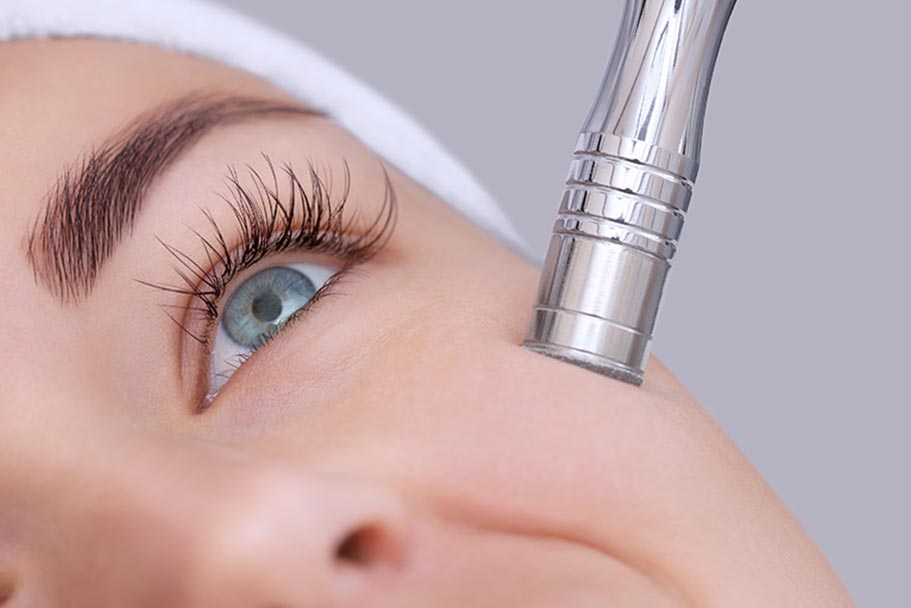DERMABRASION
Dermabrasion is a cosmetic procedure that involves the controlled removal of the top layers of skin using a high-speed rotating instrument. This treatment is used to improve the texture and appearance of the skin, particularly in cases of scarring, wrinkles, or uneven pigmentation.

Here are the key aspects of dermabrasion for the face:
Consultation and Evaluation:
The process starts with a consultation with a qualified dermatologist or plastic surgeon. During this consultation, the patient's skin type, concerns, and expectations are discussed, and a treatment plan is formulated.
- Anesthesia: Dermabrasion can be performed under local anesthesia, numbing the treated area, or in some cases, with sedation or general anesthesia, particularly for larger treatment areas or when combined with other procedures.
- Preparation: The skin is thoroughly cleaned to remove any oils or residues. In some cases, a numbing cream or gel may be applied to the treatment area to ensure patient comfort.
- Dermabrasion Procedure: The dermatologist or surgeon uses a high-speed rotating instrument, typically with a wire brush or diamond wheel, to gently abrade the outer layers of skin. This process is carefully controlled to achieve the desired level of exfoliation.
- Monitoring and Adjustments: The depth of dermabrasion is carefully monitored to avoid over-exfoliating. The surgeon may make adjustments during the procedure to ensure optimal results.
- Cooling and Soothing: After the procedure, a cool compress or soothing ointment may be applied to help reduce any discomfort and calm the skin.
- Postoperative Care: Patients are provided with specific instructions for postoperative care, which may include avoiding sun exposure, using gentle cleansers, and applying recommended ointments or creams.
-
Healing and Recovery:
The treated area will go through a healing process, during which the old, damaged skin is replaced with new, smoother skin. This process can take several weeks.
Considerations and Important Points:
- Sun Protection: Protecting the treated area from sun exposure is crucial during the healing process to avoid hyperpigmentation and other complications.
- Temporary Side Effects: Patients can expect redness, swelling, and some discomfort after the procedure. These effects gradually subside over time.
- Results and Maintenance: Patients typically notice smoother, more even-toned skin after the healing process is complete. To maintain results, a good skincare regimen and sun protection is essential.
- Suitability for Different Skin Types: Dermabrasion may not be suitable for individuals with certain skin conditions, so a thorough evaluation by a qualified professional is crucial.
- Potential Risks: While dermabrasion is considered safe when performed by a qualified provider, potential risks include infection, scarring, changes in skin pigmentation, and uneven texture.
- Combination Treatments: Dermabrasion can be combined with other procedures like chemical peels or laser therapy to achieve more comprehensive results. Dermabrasion is a versatile procedure that can be highly effective for improving skin texture and addressing specific concerns. It's important to consult with a board-certified dermatologist or plastic surgeon who can evaluate your individual needs and provide personalized recommendations for treatment.
